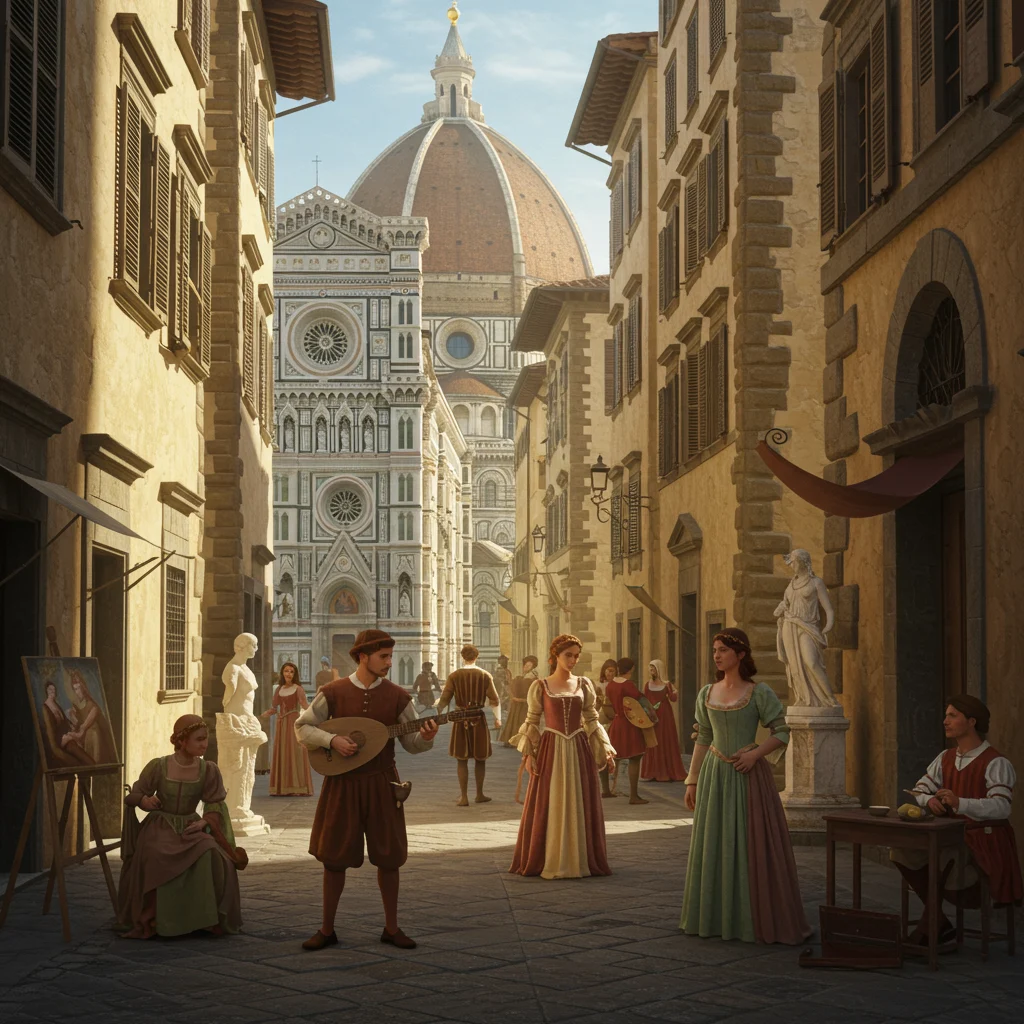Introduction: Why Florence Is the Ultimate Renaissance Destination
Florence stands as the epitome of the Renaissance, its streets echoing with the legacies of visionary artists, architects, and powerful dynasties. The city’s skyline, dominated by the majestic Duomo, and its bustling piazzas invite visitors to step into an era where art, science, and humanism flourished. Every corner reveals a story, every stone whispers of ambition and creativity. For those passionate about history, art, and cultural transformation, Florence offers an unrivaled journey through the golden age of Europe.
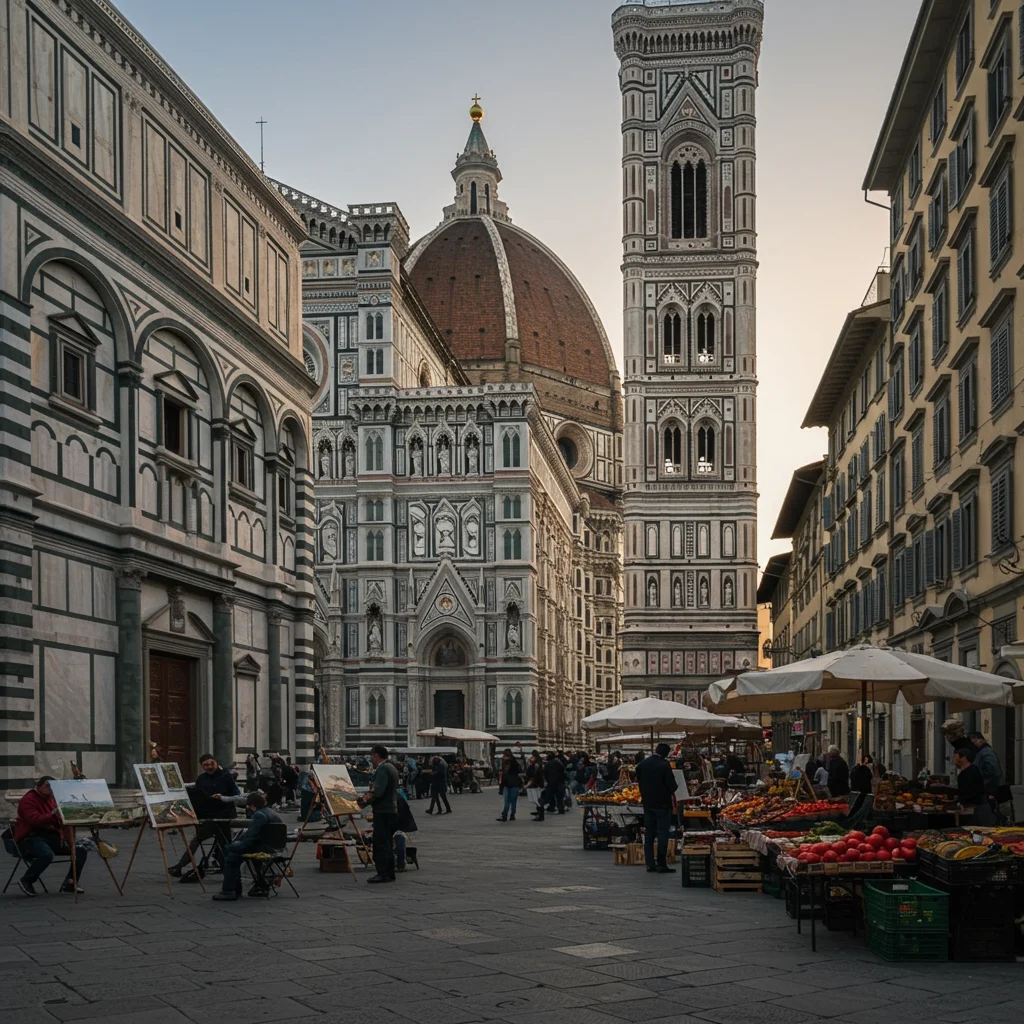
What Makes Florence’s Renaissance History Unique?
Florence’s Renaissance history is distinguished by the seamless integration of art, politics, and daily life. Unlike other cities that experienced the Renaissance as a distant influence, Florence was the nucleus where innovation was born and nurtured. The city’s compact center allowed for close collaboration among artists, thinkers, and patrons, fostering a vibrant atmosphere of competition and excellence. This unique blend turned Florence into the birthplace of masterpieces and groundbreaking ideas that shaped Western civilization.

Who Were the Medici Family and Why Are They Important?
The Medici family were Florence’s most influential patrons and rulers during the Renaissance. Rising from humble beginnings in banking, they became the city’s de facto leaders, steering its political and cultural destiny for centuries. Their wealth financed not only palaces and churches but also the careers of legendary artists such as Michelangelo and Leonardo da Vinci. The Medici’s strategic marriages and alliances extended their influence across Europe, making them central figures in both Florentine and continental history.
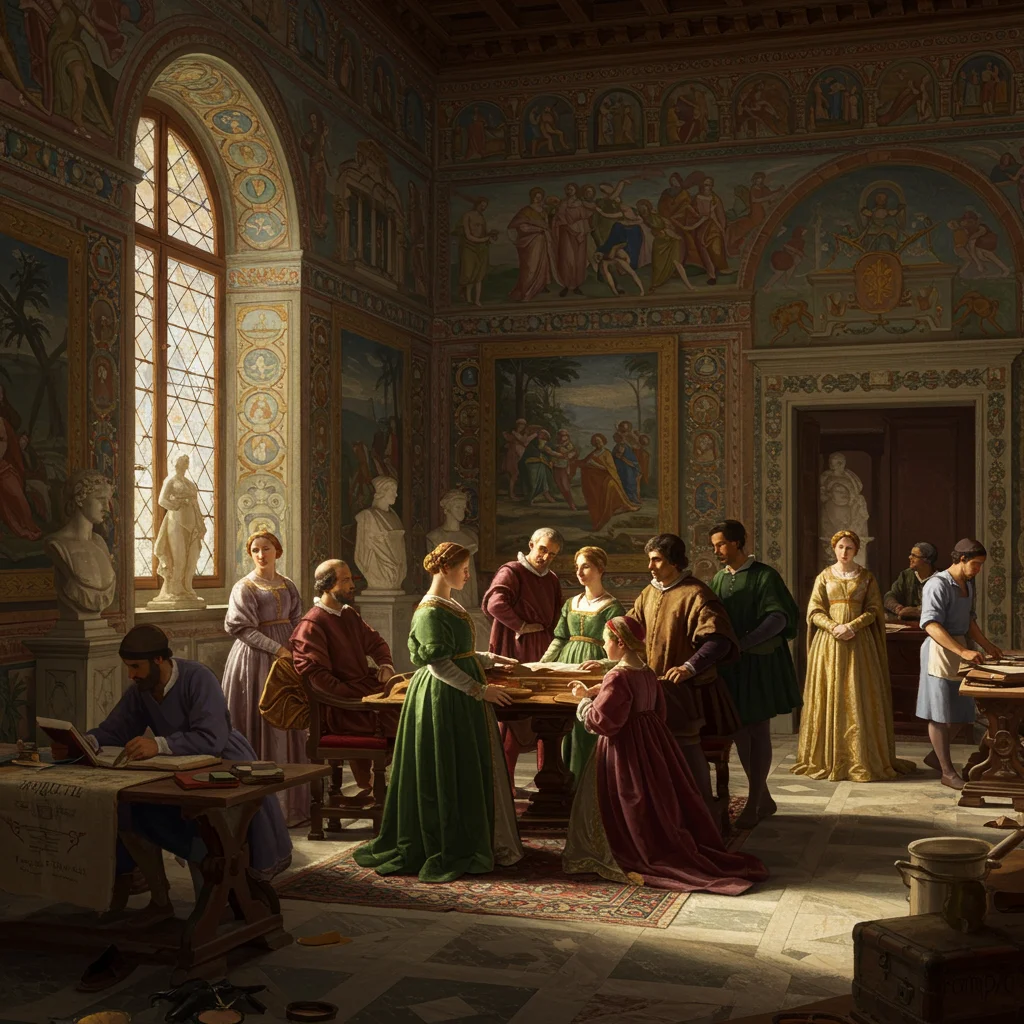
Overview of the Best Renaissance and Medici Tour in Florence
The best Renaissance and Medici tour in Florence weaves together the city’s artistic masterpieces and the dramatic tales of its ruling family. Expert guides lead visitors through grand cathedrals, intimate chapels, and secret corridors, sharing stories of ambition, genius, and intrigue. Each stop reveals a new facet of Florence’s transformation under the Medici, from architectural marvels to priceless works of art. These tours offer both historical depth and sensory delight, ensuring every participant feels the pulse of the Renaissance.
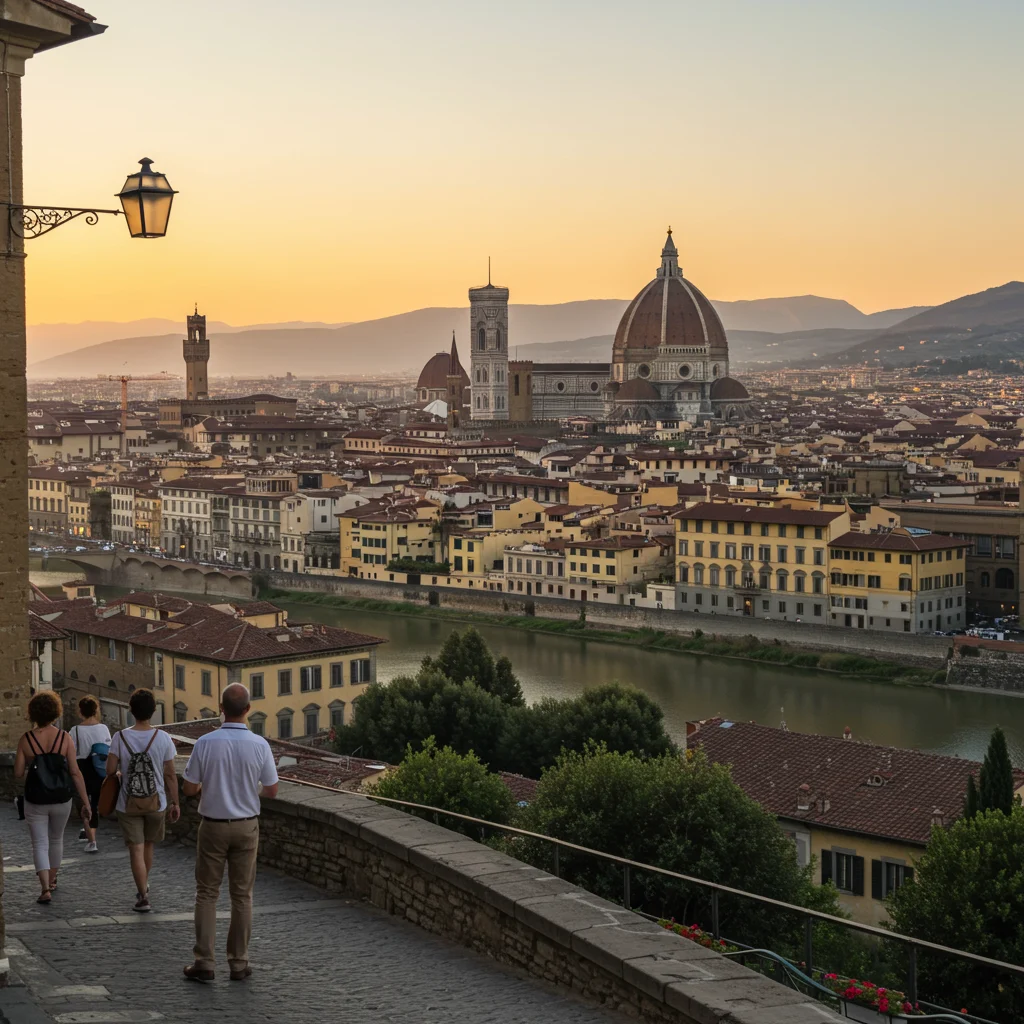
What Can You Expect on a Renaissance and Medici Tour?
On a Renaissance and Medici tour, expect a journey through Florence’s most iconic landmarks as well as hidden gems. Guides bring history to life with tales of political intrigue, artistic rivalry, and the personal dramas that shaped the city. You’ll walk through bustling piazzas, marvel at frescoed ceilings, and trace the Medici’s footsteps through their palatial residences. The experience is immersive, with opportunities to appreciate not only the art and architecture but also the sights, sounds, and atmosphere of Renaissance Florence.
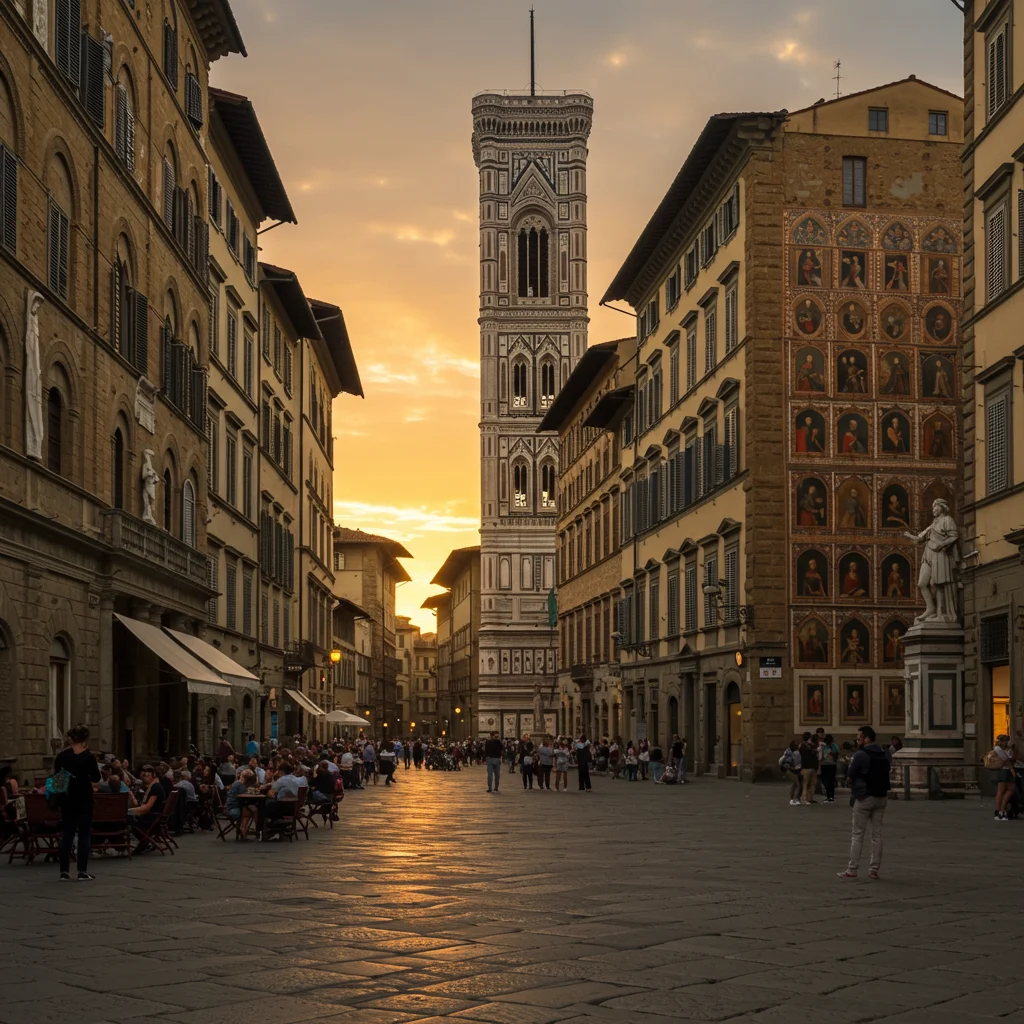
How to Choose the Right Florence Renaissance Tour for You
Choosing the ideal Florence Renaissance tour depends on your interests and travel style. Some tours focus on art history, delving deep into the masterpieces and their creators, while others emphasize the Medici’s political and personal stories. Consider the tour length, group size, and whether it includes skip-the-line access to major attractions. Reading reviews and comparing itineraries can help you find a tour that matches your curiosity and pace.
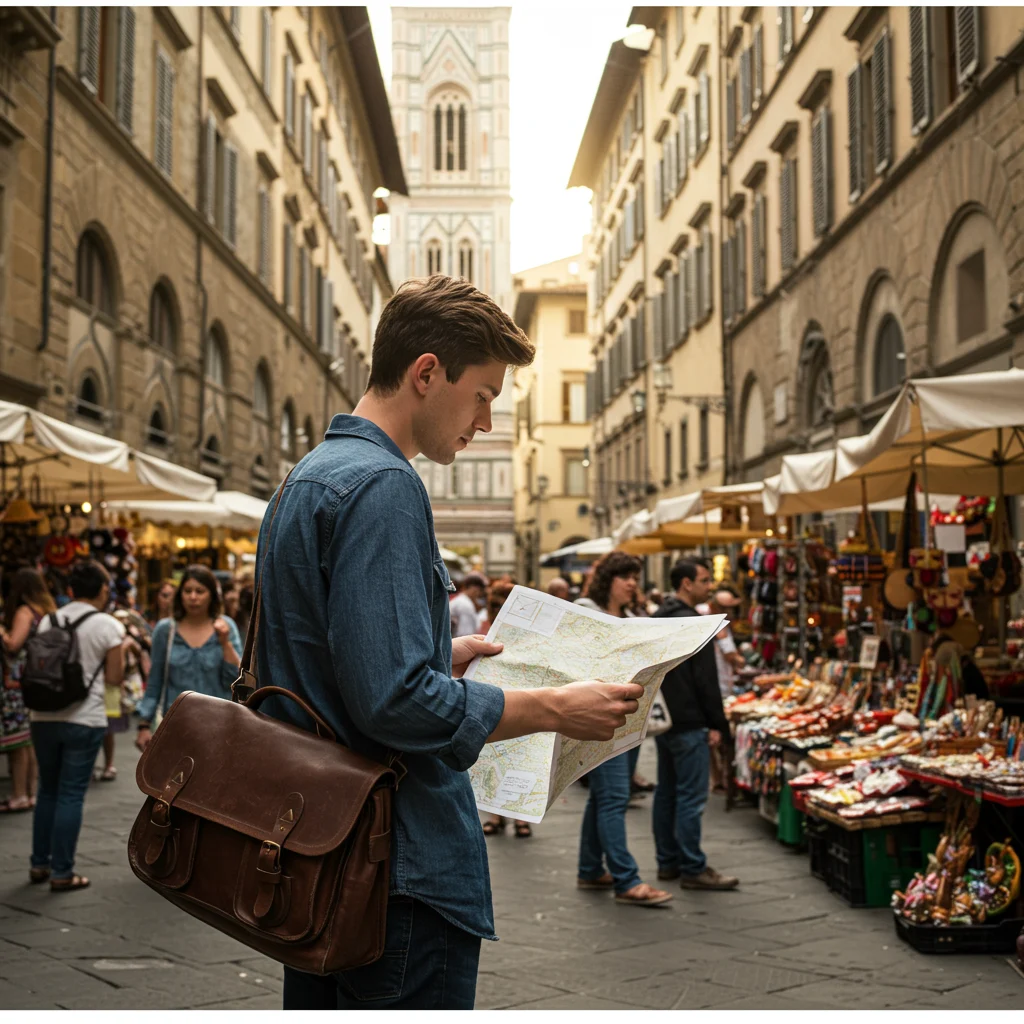
The Medici Dynasty: Power, Patronage, and Legacy
The Medici dynasty remains synonymous with Florence’s golden age. Their rise to power, patronage of the arts, and lasting legacy are central themes explored on the city’s best tours.
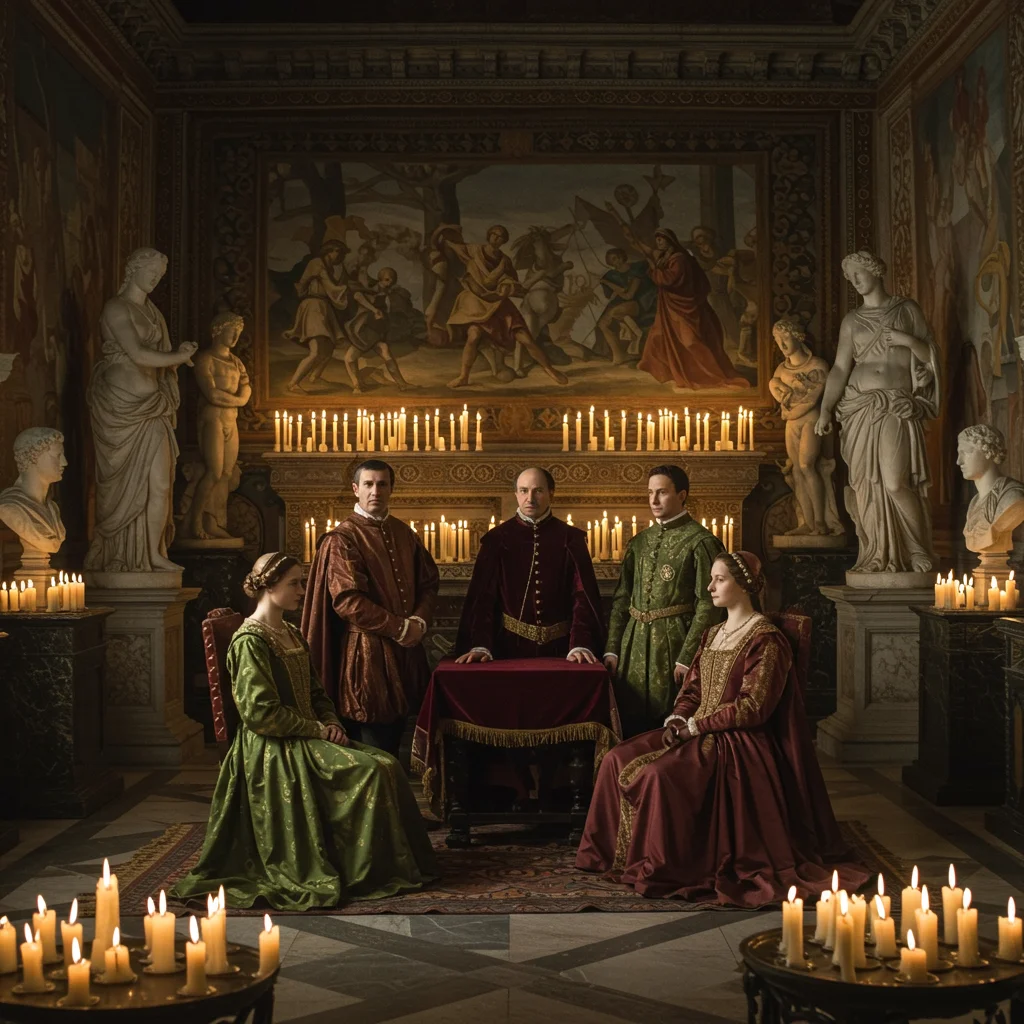
The Rise of the Medici: How Did They Shape Florence?
The Medici’s ascent began with their banking empire, which provided the resources to influence Florentine politics and society. By supporting public works and sponsoring festivals, they won the loyalty of citizens and artists alike. Their calculated investments in art and architecture not only beautified the city but also reinforced their authority, reshaping Florence into a beacon of innovation.
Key Medici Figures You’ll Learn About on the Tour
Tours often spotlight figures such as Cosimo de’ Medici, the wise patriarch who laid the groundwork for the family’s power, and Lorenzo the Magnificent, whose charisma and vision attracted the brightest minds of the Renaissance. You’ll also encounter stories of Catherine and Marie de’ Medici, whose marriages extended the family’s reach to the thrones of France.
The Medici’s Patronage of the Arts
The Medici’s support for artists propelled Florence to artistic preeminence. Their commissions enabled talents like Botticelli and Michelangelo to create enduring masterpieces. This patronage fostered an environment where creativity thrived, and the city’s visual landscape transformed into a living gallery. As we noted in our exploration of historical architecture tours, the legacy of powerful patrons is visible in every stone and fresco.
Florence as the Cradle of the Renaissance
Florence’s claim as the cradle of the Renaissance is rooted in its unique blend of economic prosperity, intellectual curiosity, and civic pride. The city became a laboratory for new ideas, attracting thinkers and artists eager to challenge tradition.
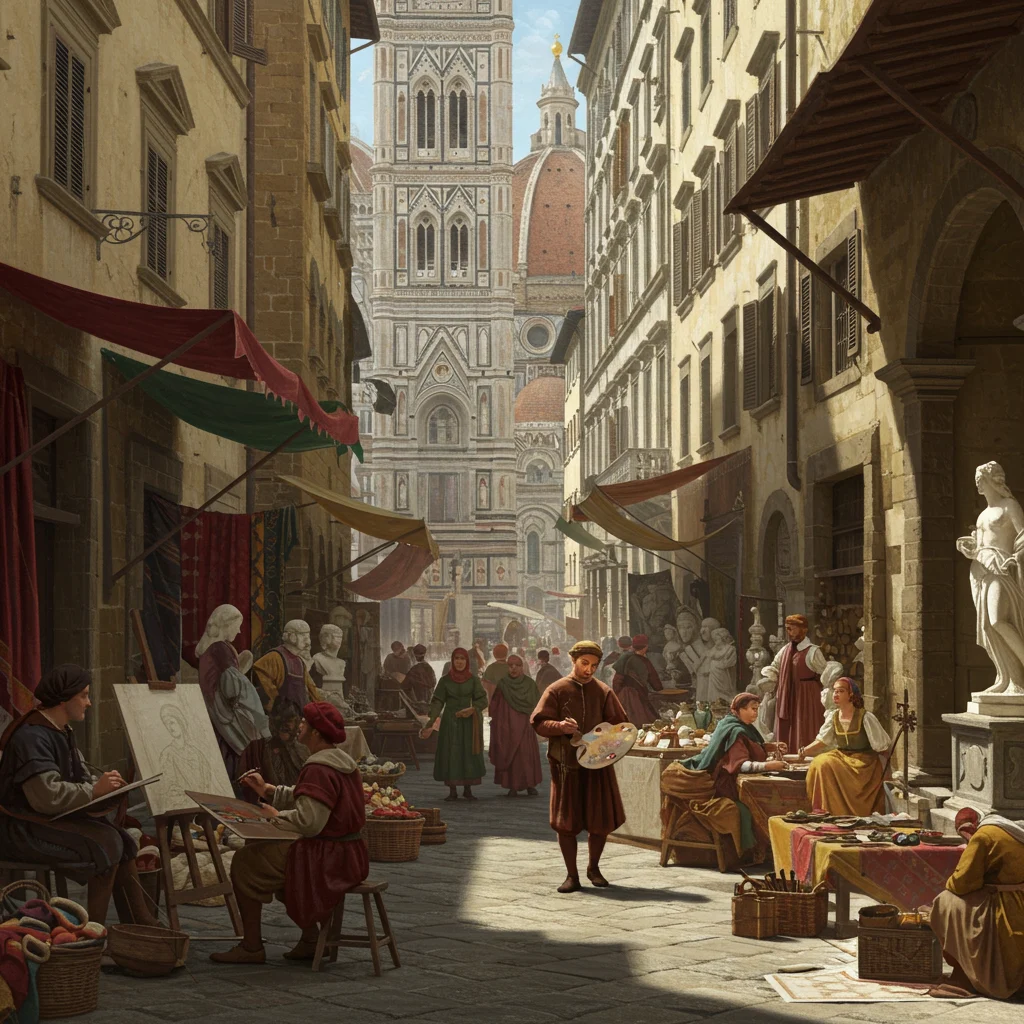
What Sparked the Renaissance in Florence?
The convergence of wealthy patrons, skilled artisans, and access to classical texts created fertile ground for the Renaissance. The Medici’s encouragement of scholarship and artistic experimentation accelerated this transformation, turning Florence into a magnet for innovation.
Why Was Florence the Center of Artistic Innovation?
Florence’s guilds and educational institutions fostered a culture of excellence. Artists competed for prestigious commissions, while humanists debated philosophy in lively salons. The city’s compact geography facilitated collaboration and rivalry, ensuring that new ideas spread quickly and widely.
Tour Highlights: Must-See Renaissance Sites in Florence
A Renaissance and Medici tour in Florence brings you face to face with some of the world’s most celebrated monuments and hidden treasures. Each site offers a unique perspective on the city’s artistic and political history.
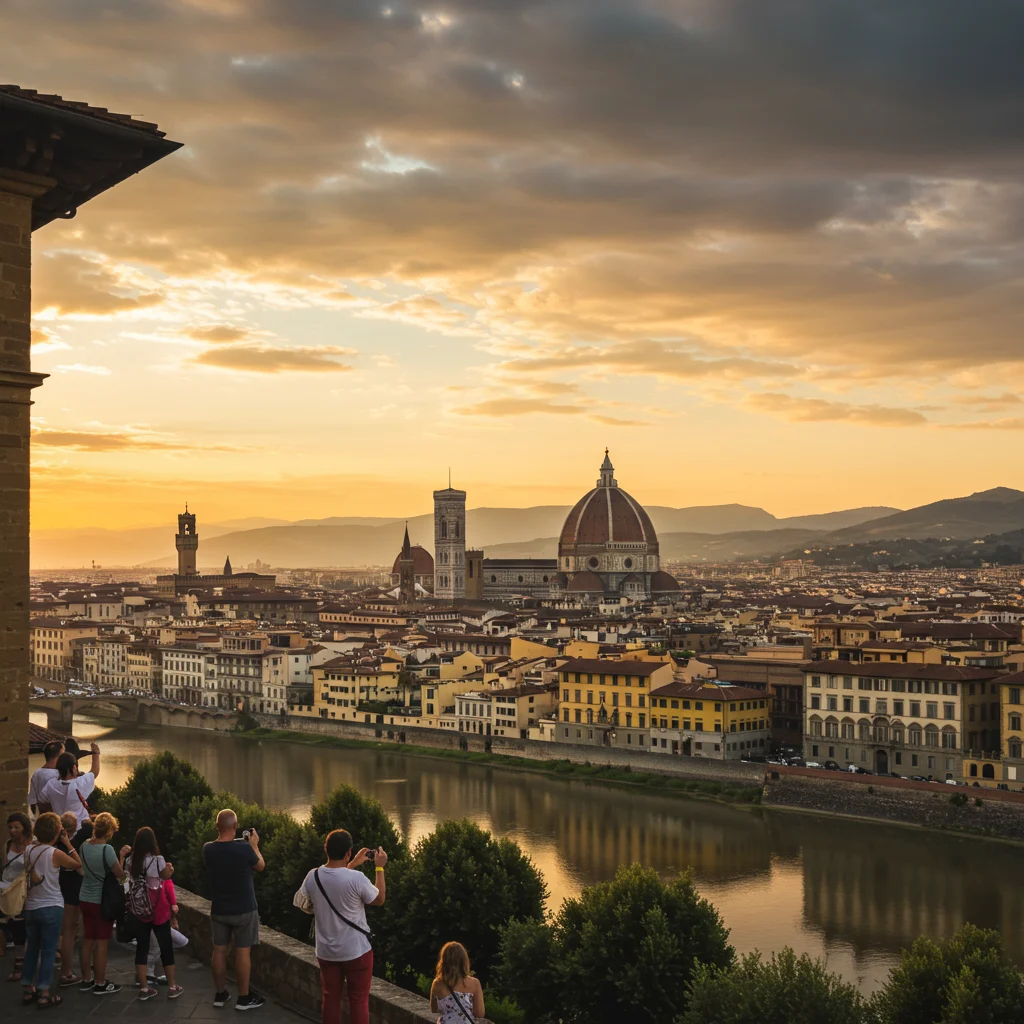
The Duomo: Florence’s Iconic Cathedral
The Duomo, or Cathedral of Santa Maria del Fiore, dominates Florence’s skyline with its terracotta-tiled dome and marble façade. Its grandeur and intricate details embody the spirit of the Renaissance.
Brunelleschi’s Dome: An Architectural Marvel
Filippo Brunelleschi’s dome is a feat of engineering and imagination. The climb to the top rewards visitors with panoramic views of Florence and a close look at the frescoed interior. The sense of scale and ingenuity leaves a lasting impression on all who witness it.
The Baptistery and Its Gates of Paradise
The Baptistery’s gilded bronze doors, known as the Gates of Paradise, shine in the sunlight, displaying scenes from the Old Testament. Created by Lorenzo Ghiberti, these doors are masterpieces of relief sculpture and a testament to Florentine craftsmanship.
Piazza della Signoria: The Political Heart of Florence
Piazza della Signoria has long served as Florence’s civic center. Statues of mythic heroes and powerful rulers line the square, bearing witness to centuries of public life and political intrigue.
Palazzo Vecchio: Power and Intrigue
The Palazzo Vecchio rises above the piazza, its fortress-like exterior hinting at the turbulent events that unfolded within. The grand halls and secret passages transport visitors to an era of ambition and rivalry.
Loggia dei Lanzi: Open-Air Sculpture Gallery
The Loggia dei Lanzi shelters a stunning array of marble and bronze sculptures. The open-air setting allows sunlight to play across the surfaces, highlighting the expressive details and dynamic poses of each work.
Uffizi Gallery: A Treasure Trove of Renaissance Art
The Uffizi Gallery houses the world’s finest collection of Renaissance paintings. Wandering its corridors, visitors encounter the luminous colors and graceful forms that define Florentine art.
Masterpieces You’ll Encounter in the Uffizi
Botticelli’s Birth of Venus, Leonardo’s Annunciation, and Caravaggio’s Medusa are just a few of the treasures awaiting discovery. Each painting tells a story of creativity, ambition, and the pursuit of beauty.
Tips for Navigating the Uffizi
Given the gallery’s popularity, booking tickets in advance is essential. Consider visiting early in the morning or late in the afternoon for a more relaxed experience. Comfortable shoes and a map will help you make the most of your visit.
Palazzo Pitti and the Boboli Gardens: Medici Splendor
The Palazzo Pitti and its lush Boboli Gardens reflect the Medici’s taste for luxury and grandeur. The palace’s opulent rooms and sweeping gardens offer a glimpse into the family’s private world.
What’s Inside Palazzo Pitti?
The palace houses several museums, including the Palatine Gallery and the Royal Apartments. Lavish furnishings, gilded ceilings, and priceless artworks fill every room, creating an atmosphere of refined extravagance.
Exploring the Boboli Gardens
The Boboli Gardens invite leisurely strolls along shaded pathways, past fountains, grottos, and classical statues. The scent of blooming flowers and the rustle of leaves provide a sensory escape from the city’s bustle.
Medici Chapels: Where Florence’s Rulers Rest
The Medici Chapels are both mausoleum and monument, adorned with marble, frescoes, and precious stones. Here, the Medici rest in ornate tombs, their legacy immortalized in stone and light.
The Basilica of San Lorenzo: Medici’s Family Church
San Lorenzo served as the parish church of the Medici family. Its elegant interior and harmonious proportions reflect the ideals of Renaissance architecture.
Michelangelo’s New Sacristy
Michelangelo’s New Sacristy houses some of his most moving sculptures, including the allegorical figures of Dawn and Dusk. The interplay of light and shadow highlights the expressive power of his work.
The Medici Tombs: Stories in Stone
The Medici tombs combine grandeur with intimacy, their sculpted figures capturing both the dignity and vulnerability of their subjects. Each detail reveals the family’s aspirations and the artistry of those who memorialized them.
Hidden Gems: Lesser-Known Stops on the Tour
Beyond the grand monuments, Florence hides lesser-known treasures that enrich any Renaissance and Medici tour. These sites offer fresh perspectives and quieter moments of discovery.
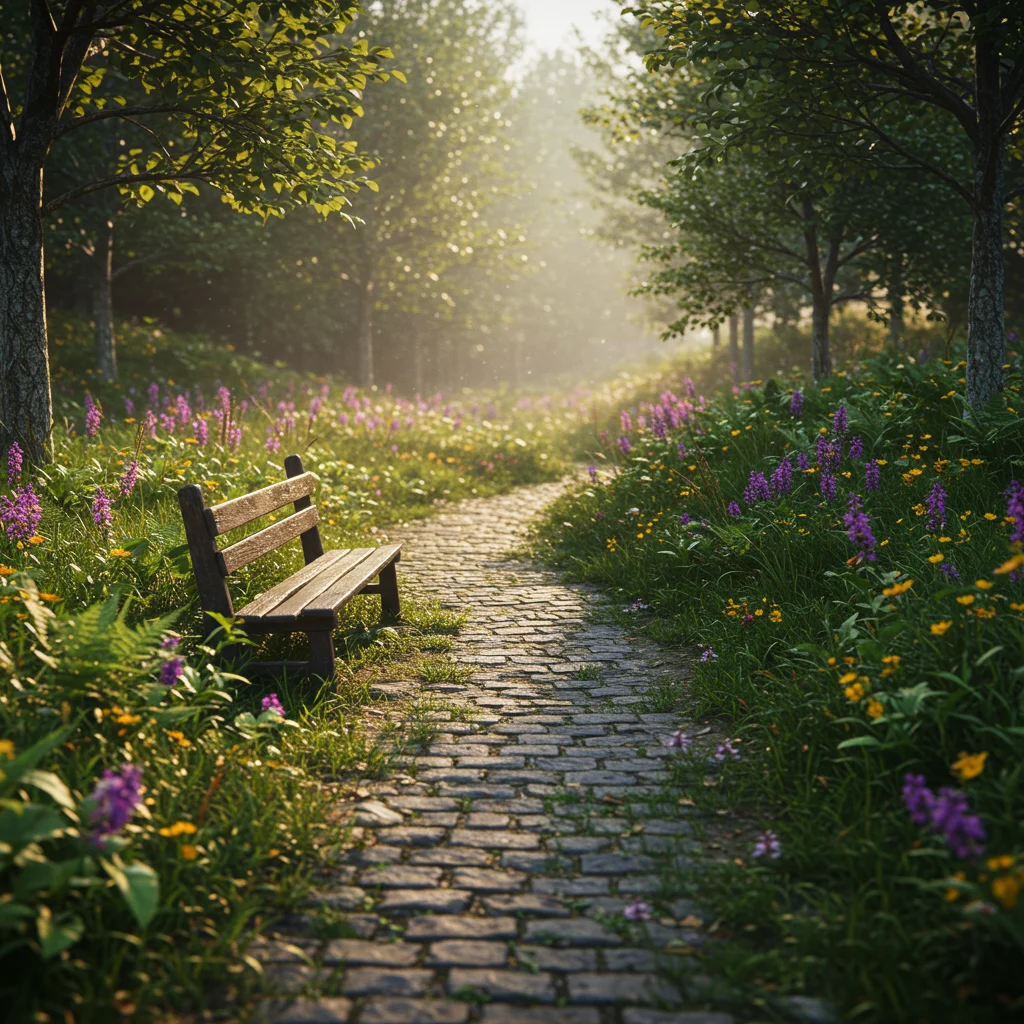
Orsanmichele: From Granary to Church
Orsanmichele began as a grain market before its transformation into a church. Its unique architecture and ornate tabernacle showcase the intersection of commerce and faith in Renaissance Florence.
Museo Galileo: Science in the Renaissance
The Museo Galileo celebrates the scientific achievements of the Renaissance. Original instruments and interactive displays bring to life the curiosity and ingenuity that defined the era.
Casa Buonarroti: Michelangelo’s Early Years
Casa Buonarroti offers a glimpse into the formative years of Michelangelo. Sketches, letters, and sculptures reveal the artist’s evolving style and relentless pursuit of perfection.
Via de’ Tornabuoni: Florence’s Elegant Shopping Street
The Via de’ Tornabuoni is lined with historic palaces and luxury boutiques. Window displays dazzle with Italian craftsmanship, while the street’s stately facades evoke centuries of elegance and refinement.
The Vasari Corridor: Florence’s Secret Passageway
The Vasari Corridor is one of Florence’s most intriguing architectural features, connecting the Uffizi with the Pitti Palace via a hidden elevated walkway.
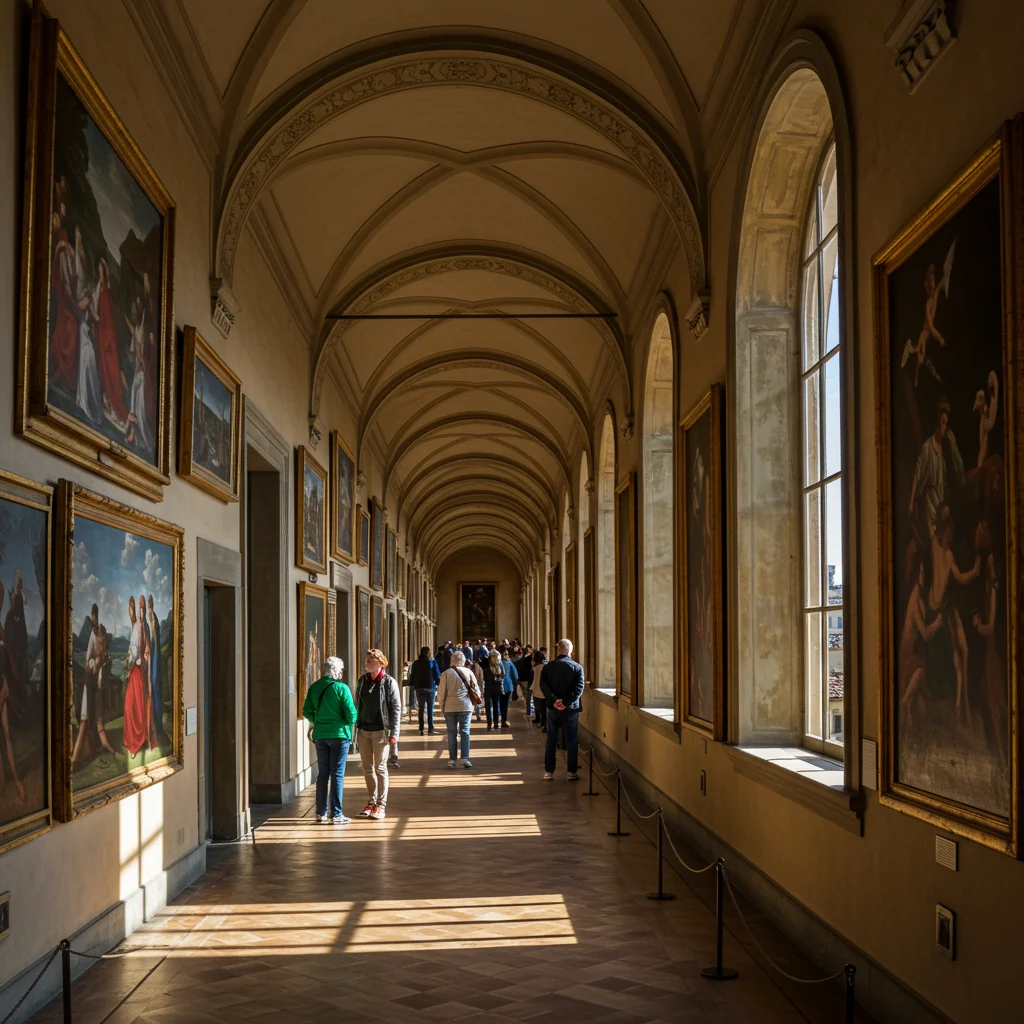
What Is the Vasari Corridor and Can You Visit It?
Commissioned by Cosimo I de’ Medici, the corridor allowed the family to move safely between their residence and government offices. While access is limited, select tours offer the rare chance to follow in the footsteps of the Medici and view the corridor’s remarkable collection of portraits.
Stories and Legends of the Vasari Corridor
Legend holds that the corridor was used for secret meetings and clandestine escapes. Its narrow windows overlook the Arno River and the bustling streets below, offering a unique vantage point on the city’s past and present.
Famous Artists of the Florentine Renaissance
Florence nurtured a constellation of artistic geniuses whose works continue to inspire awe and admiration around the world.

Leonardo da Vinci: Genius of Many Talents
Leonardo da Vinci epitomized the Renaissance ideal of the polymath. His notebooks brim with observations on anatomy, engineering, and the natural world. Paintings such as The Annunciation reveal his mastery of light, perspective, and emotion.
Michelangelo: Sculptor, Painter, Architect
Michelangelo pushed the boundaries of sculpture and painting with works that radiate power and sensitivity. From the David to the Sistine Chapel, his art captures the complexity of the human experience.
Botticelli: The Poet of Painting
Sandro Botticelli infused his paintings with lyrical grace and symbolic richness. Works like The Birth of Venus and Primavera remain icons of beauty and imagination.
Donatello and the Revolution in Sculpture
Donatello pioneered new techniques in sculpture, bringing lifelike realism and dramatic expression to his bronze and marble figures. His innovations paved the way for generations of artists.
How Did the Medici Support These Artists?
The Medici provided financial backing, commissions, and social connections that enabled artists to experiment and excel. Their palaces and chapels became laboratories for creative exchange, nurturing the talents that would define an epoch. As experts often say:
“The Medici were not just patrons—they were partners in the creative process, shaping the destiny of art and culture in Florence and beyond.”
Renaissance Florence: Daily Life and Culture
Beyond grand works of art, Renaissance Florence was a city alive with commerce, celebration, and the rhythms of daily existence. Understanding this context adds depth to any exploration of its monuments.
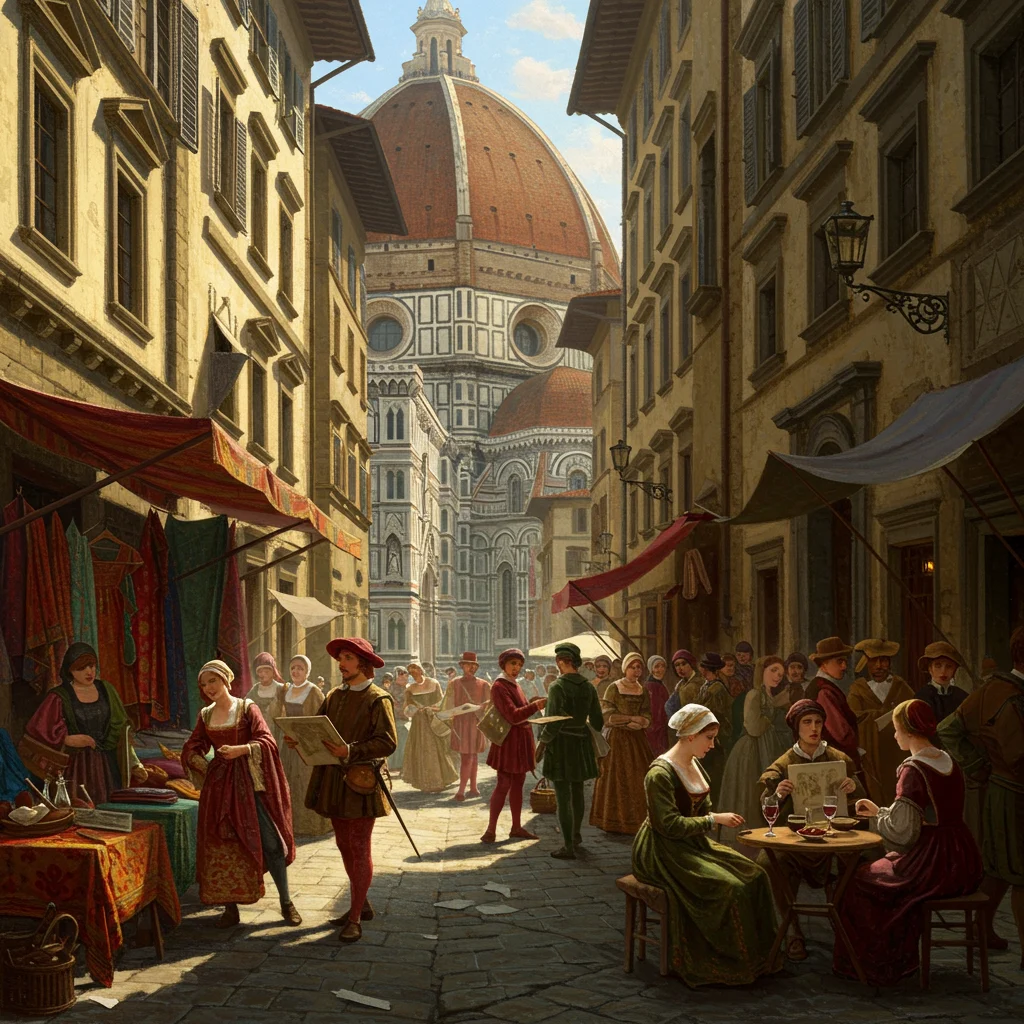
What Was Daily Life Like in Renaissance Florence?
Florentines navigated crowded markets, vibrant festivals, and the ever-present influence of powerful families. The aroma of fresh bread and roasting chestnuts mingled with the clang of blacksmiths and the music of street performers. Life unfolded in public spaces, where alliances were forged and reputations made.
Florentine Fashion and Society
Fashion was a language of status and identity in Renaissance Florence. Sumptuous fabrics, intricate embroidery, and distinctive hats distinguished the city’s elite. Social rituals, from weddings to religious processions, offered occasions to display wealth and taste.
Florence’s Guilds and Their Influence
Guilds regulated trades, protected their members, and sponsored public works. Their emblems adorn many buildings, testifying to their role in shaping Florence’s economic and artistic landscape. The system fostered innovation and pride in craftsmanship, much like the culinary traditions shared in our article on Parmigiano Reggiano farm tours.
Medici Tales: Scandals, Intrigue, and Power Plays
Beneath the Medici’s cultivated image lay a world of rivalries, conspiracies, and dramatic reversals. These stories animate Florence’s history and provide context for its monuments.
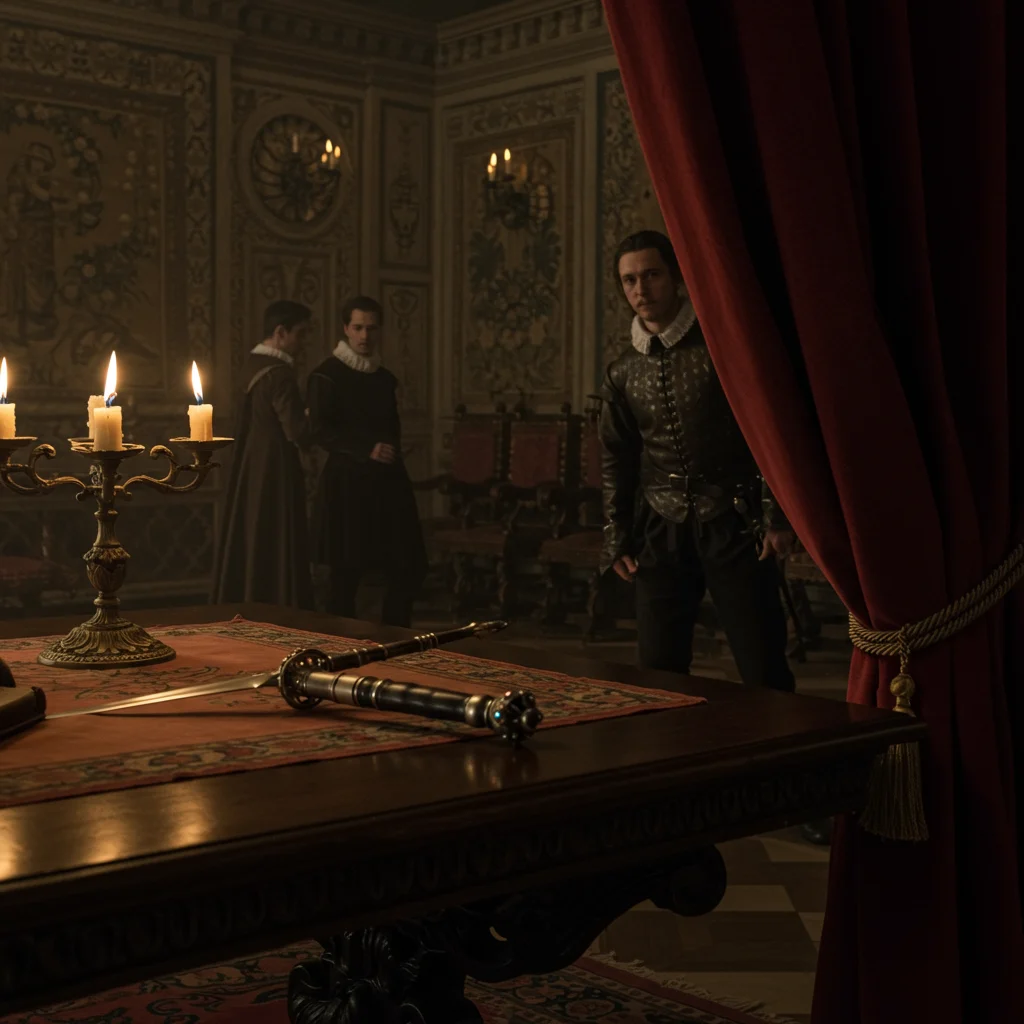
The Pazzi Conspiracy: A Plot Against the Medici
The Pazzi Conspiracy was a daring attempt to overthrow the Medici during Easter Mass in the Duomo. The plot failed, but its violent aftermath reshaped the city’s political landscape and reinforced Medici authority.
Cosimo and Lorenzo: The Wise and the Magnificent
Cosimo de’ Medici and Lorenzo the Magnificent exemplified the blend of shrewdness and vision that defined their family. Their ability to balance power, diplomacy, and patronage secured Florence’s prosperity and cultural leadership.
Catherine and Marie de’ Medici: Queens of Europe
Catherine and Marie de’ Medici extended the family’s influence to the courts of France. Their lives were marked by political intrigue, personal struggle, and the challenge of ruling in male-dominated societies.
The Medici and the Papacy: Power Beyond Florence
Several Medici ascended to the papacy, leveraging their ecclesiastical power to further the family’s interests and patronize new works of art. Their dual roles as spiritual and temporal leaders left a lasting imprint on both Florence and Rome.
Florence’s Renaissance Architecture: What to Look For
The city’s architecture reflects the ideals of harmony, proportion, and humanism that defined the Renaissance. Knowing what to look for can deepen your appreciation of Florence’s built environment.
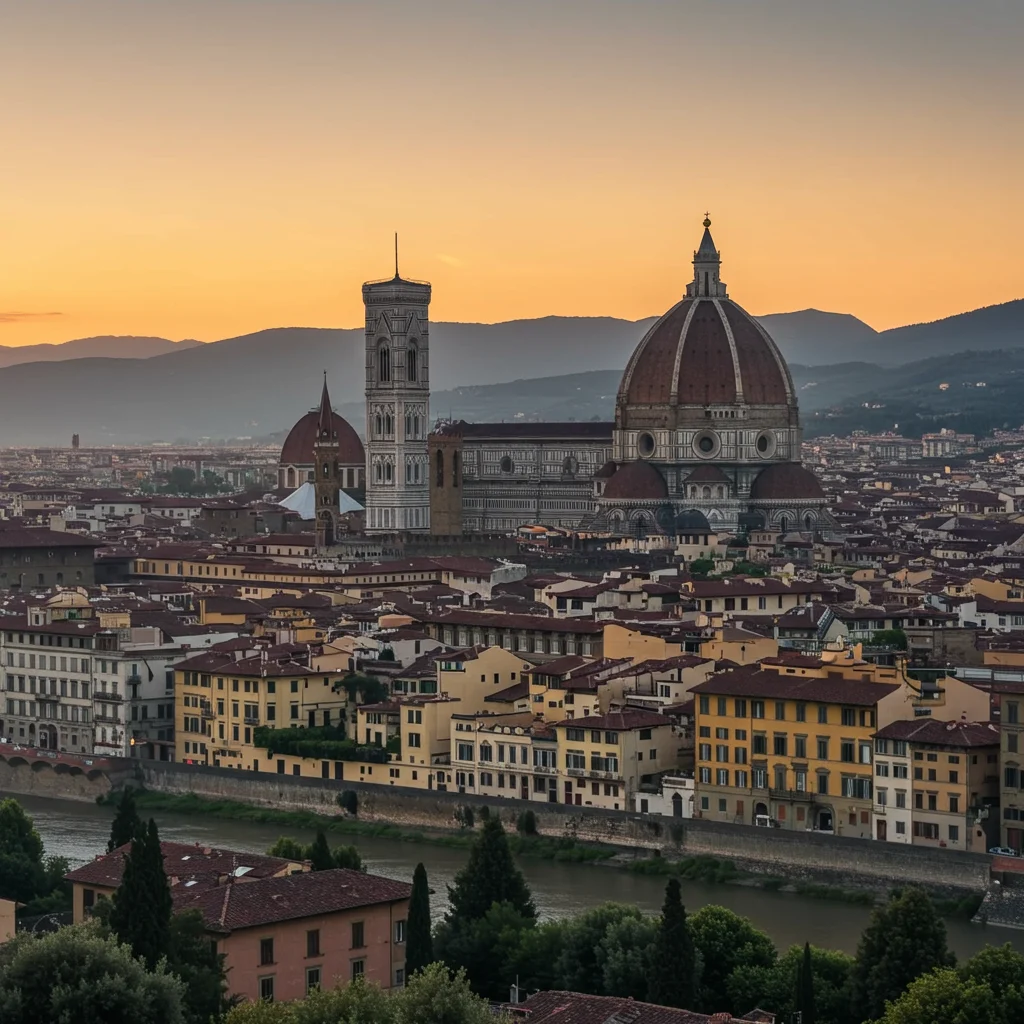
Key Features of Renaissance Architecture
Renaissance buildings emphasize symmetry, balanced proportions, and classical motifs such as columns, arches, and domes. The careful use of light and space creates inviting interiors and majestic facades.
Famous Architects and Their Works in Florence
Brunelleschi, Alberti, and Vasari are among the architects whose innovations transformed Florence’s skyline. Their works, from the Duomo to the palaces of the Medici, remain enduring symbols of the city’s spirit.
How to Recognize Medici Influence in Florence’s Streets
The Medici’s mark is visible in the coats of arms, decorative motifs, and strategic placement of their palaces. Their emphasis on grandeur and visibility reinforced their status and shaped the city’s identity, much as we described in our post about cathedrals as symbols of power.
Planning Your Own Renaissance and Medici Tour
Thoughtful planning can help you make the most of your time in Florence. Whether you prefer guided tours or independent exploration, there are options for every interest and schedule.
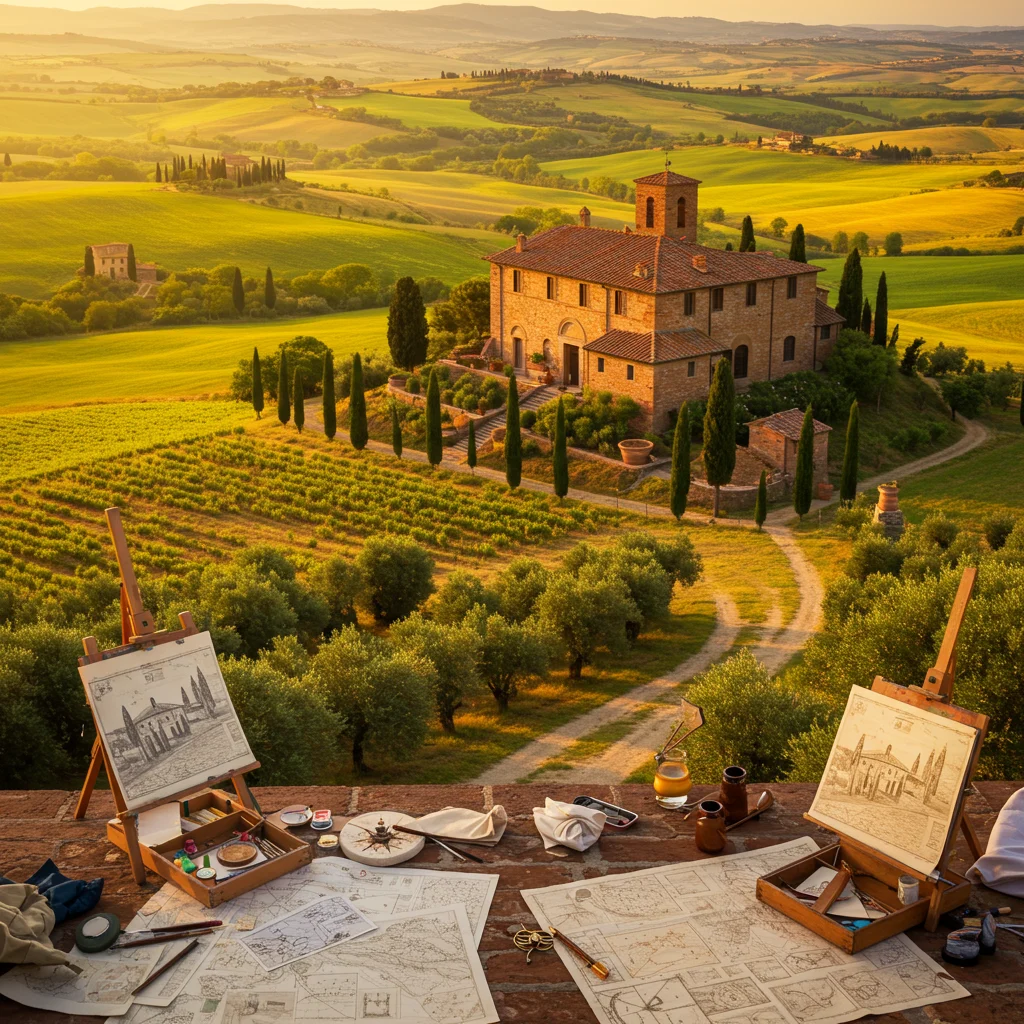
Best Times of Year to Visit Florence
The best times to visit Florence are spring (April to June) and fall (September to October), when the weather is mild and crowds are thinner. Summer brings festivals and long daylight hours but also higher temperatures and larger groups.
How to Book the Perfect Tour
Research tour providers, read recent reviews, and compare itineraries to find the best fit. Many reputable operators allow you to book activities in advance, ensuring a hassle-free experience and access to popular sites.
Guided vs. Self-Guided Tours: Which Is Better?
Guided tours offer expert insights, historical context, and efficient navigation through crowded attractions. Self-guided tours, meanwhile, provide flexibility and the chance to linger at your favorite spots. Consider your travel style and desired depth of information when choosing.
Tips for an Enjoyable Tour Experience
Preparation is key to a comfortable and rewarding tour. Here are some practical tips:
- Wear comfortable shoes for walking on cobblestone streets.
- Bring a refillable water bottle, especially in warmer months.
- Carry a light jacket or scarf for visiting churches.
- Keep your camera or smartphone ready to capture memorable moments.
What to Wear and Bring on Your Tour
Dress modestly for entry into religious sites, and consider layers to adjust for changes in temperature. Sunglasses and sunscreen are recommended for outdoor segments, while a small bag or backpack keeps essentials handy.
Accessibility and Family-Friendly Options
Many tours offer accessible routes and family-friendly itineraries. Check in advance for stroller or wheelchair accommodations, and inquire about shorter tour options for younger children. For inspiration on family travel, you might appreciate our feature on private tours in Split.
Combining Your Tour with Other Florence Experiences
Florence’s appeal extends beyond its Renaissance treasures. Consider pairing your tour with culinary delights, shopping, or additional cultural attractions for a well-rounded visit.
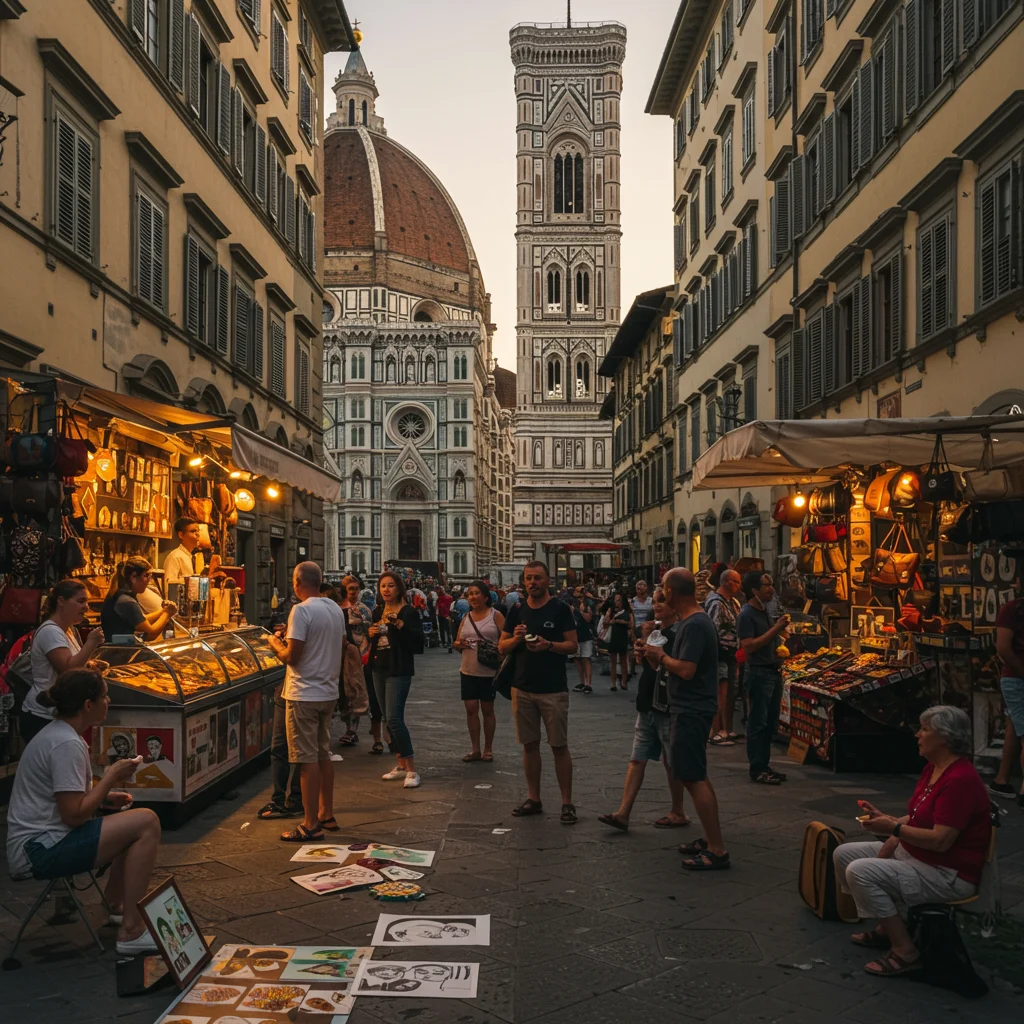
Florentine Cuisine: Where to Eat Near Major Sites
After exploring the city’s masterpieces, sample local dishes such as bistecca alla fiorentina, ribollita, or fresh pastries. Many trattorias and cafés are located within walking distance of major landmarks, offering a chance to relax and savor the flavors of Tuscany.
Shopping for Renaissance-Inspired Souvenirs
Florence is renowned for its leather goods, gold jewelry, and artisanal paper. Browse the markets and boutiques along Via de’ Tornabuoni for gifts that reflect the city’s artistic heritage.
Other Must-See Museums and Attractions in Florence
Beyond the main tour stops, consider visiting the Bargello Museum, the Museo dell’Opera del Duomo, or the Stibbert Museum. Each offers unique collections and perspectives on Florence’s rich history. For those who appreciate self-guided experiences, our review of the Alhambra audio guide tour may provide useful tips and inspiration.
Frequently Asked Questions About Florence Renaissance Tours
Travelers often have practical questions before booking a Renaissance and Medici tour. Here are answers to some of the most common queries.
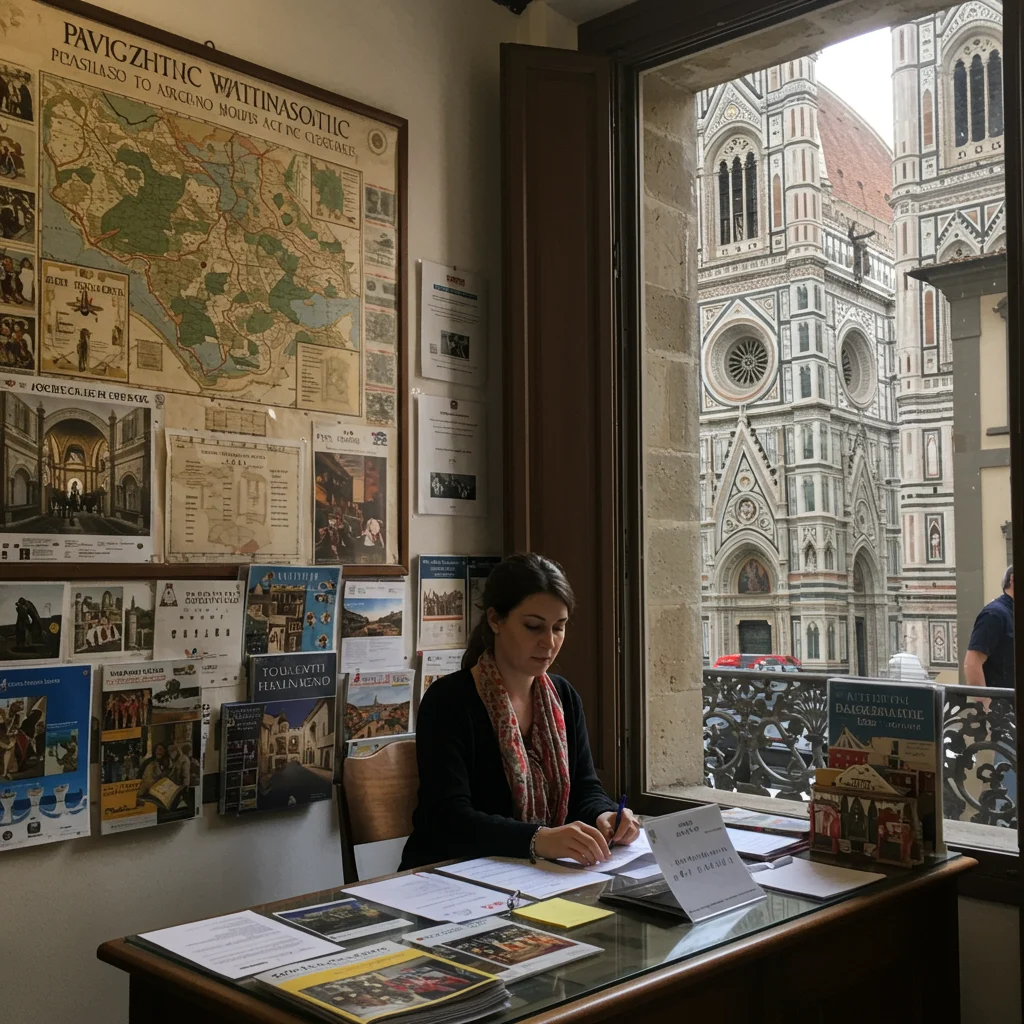
How Much Time Do You Need for a Renaissance Tour?
Most comprehensive tours last between three and six hours, covering key sites and providing in-depth commentary. Shorter options are available for those with limited time, while full-day itineraries allow for a more immersive experience.
Are Florence Renaissance Tours Suitable for Kids?
Many tours are designed with families in mind, offering engaging stories, interactive activities, and shorter walking routes. Guides often tailor their commentary to suit younger audiences, making the experience both educational and enjoyable.
Do You Need to Book in Advance?
Advance booking is strongly recommended, especially during peak travel seasons. This guarantees your spot and often allows you to skip long lines at popular attractions. You can easily find tours and secure your reservation online.
How to Book on Viator
Viator is a trusted platform for booking guided tours, activities, and experiences in Florence and beyond. To reserve your Renaissance and Medici tour, visit Viator’s website, browse available options, and select the date and time that best suit your itinerary. The booking process is user-friendly, offering detailed descriptions, verified reviews, and secure payment options.

Viator’s customer service and flexible cancellation policies provide peace of mind, making it a convenient choice for travelers planning their Florence adventure.
Conclusion: Why a Renaissance and Medici Tour Is Unmissable in Florence
A Renaissance and Medici tour in Florence offers far more than a history lesson—it is an invitation to experience the city’s enduring spirit, breathtaking beauty, and captivating stories firsthand. From the soaring dome of the Duomo to the shadowed corridors of Medici palaces, each moment deepens our appreciation for the creativity and ambition that transformed Florence into a beacon of culture.
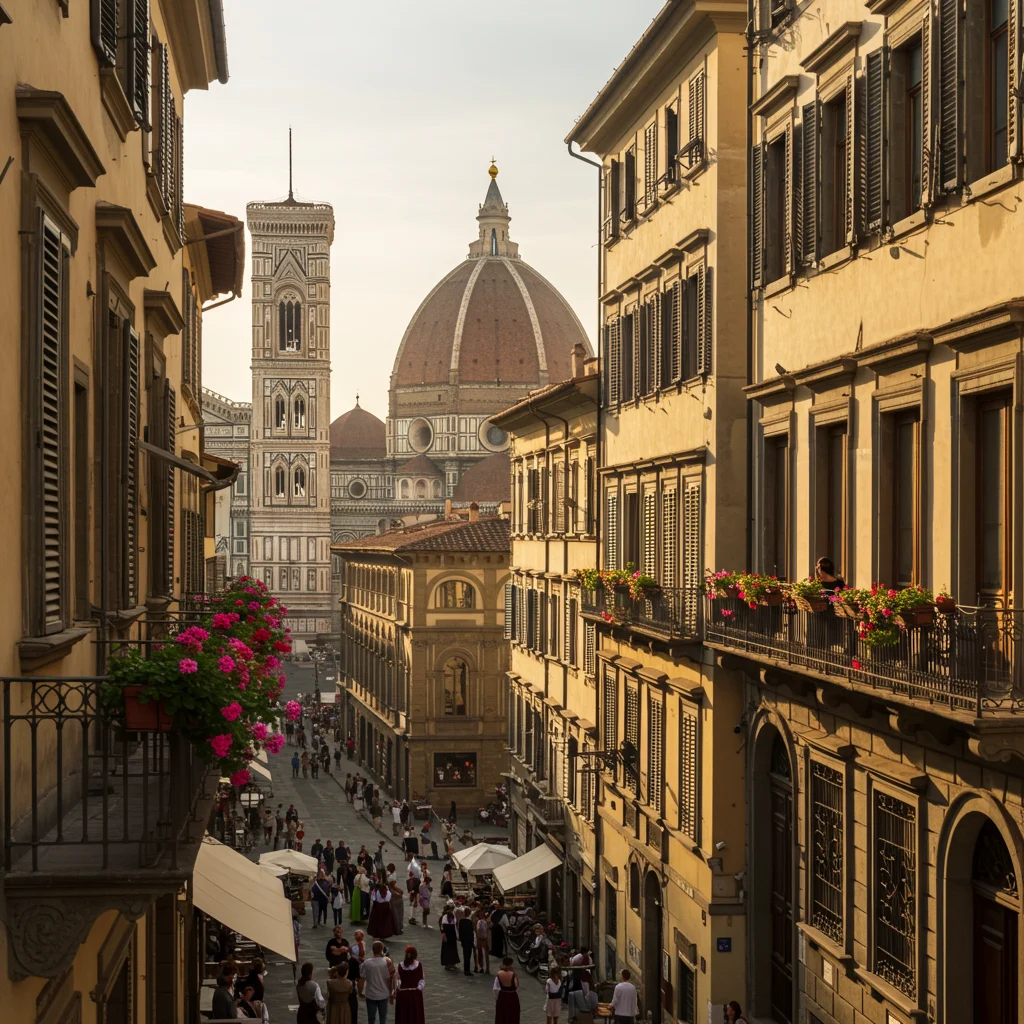
At Unisho, we believe every traveler deserves to witness the wonders of Florence’s Renaissance legacy. For more inspiration, resources, and curated travel experiences, visit Unisho and start planning your unforgettable journey.
Disclaimer: This information is accurate to the best of our knowledge; however, there may be changes or mistakes. Please verify exact details on the Viator booking page.

